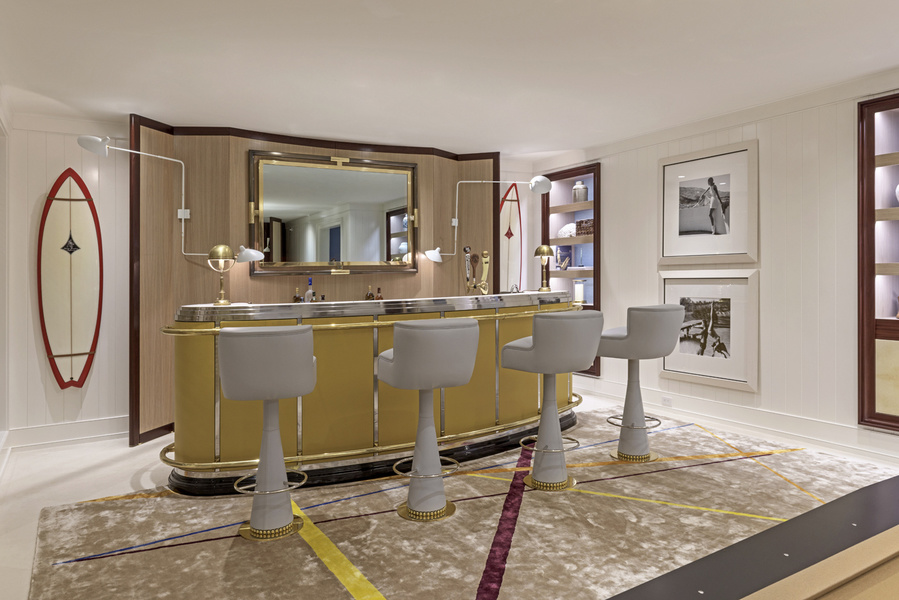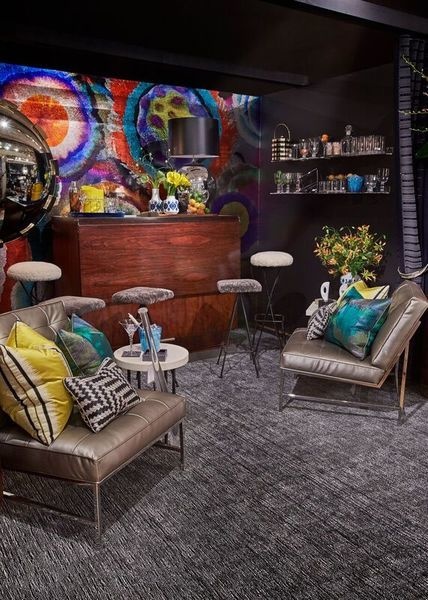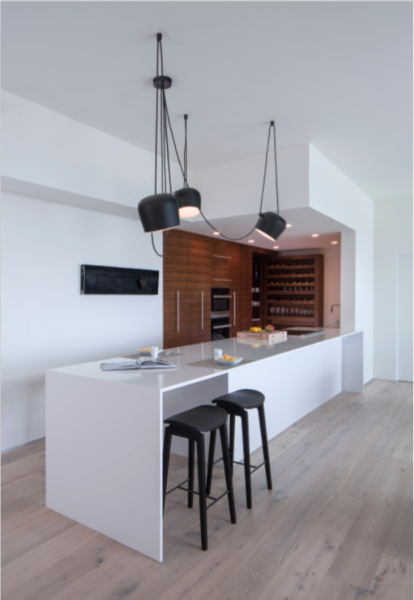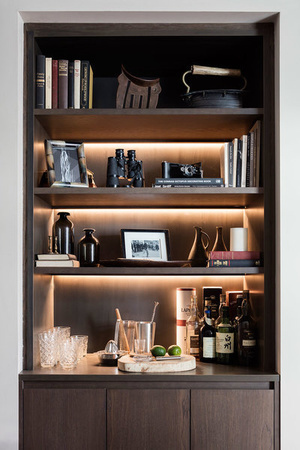Raise your glass in style with these tricks and tips on designing a chic—and fun—bar area
 Bleached wood, mixed metal finishes, and a retro-inspired bartop give this beach-house bar designed by Achille Salvagni a 1960’s inspired vibe.
Bleached wood, mixed metal finishes, and a retro-inspired bartop give this beach-house bar designed by Achille Salvagni a 1960’s inspired vibe.
Kicking back and enjoying a cocktail in the comfort of home is all the more fun in a true bar of your own. Whether your taste is shaken not stirred, or more of the brewsky and peanuts variety, the beauty of a home bar is that you can design it exactly the way you want.
“It’s a focal point for socializing,” said Rome-based architect and designer Achille Salvagni. “Each house is different, and so the design of a bar should be in accordance with the aesthetic of the environment.”
Here are more tips from design pros to raise your bar to higher standards.
Make it your own
Ideally the setup would include a selection of spirits, liquors, mixers, shakers and all the accompanying elements, a fridge and freezer (for ice and some spirits), a worktop area for fruits and garnishes, and of course a selection of glassware to ensure you have the right glass for every cocktail.
These elements should be carefully considered when designing your bar. Some things you may want permanently on display, and others you will want to be able to put away when not being used. The cabinetry therefore must be flexible, easy to maintain, and suited to the rest of your interiors.
You may want to have a flexible area so your guests can sit at the bar itself while you make their drinks and talk with them, or have another seating area where you can bring the drinks to them. It is also important to be able to control the lighting in and around the bar area by creating the right atmosphere and mood. It’s about making your guests feel comfortable and relaxed.
“Often a fixed banquette on one side and moveable chairs opposite work well—it allows the space to adapt as necessary. Side tables are an important feature, too, since you’ll need places for guests to put their glasses and other ephemera while engaging in conversation.”
-Rome, Italy-based architect and designerAchille Salvagni
Work out the details
People often start in the more formal spaces of a home and end up in the more informal entertaining spaces as the night progresses. Having an at-home bar that is located between these two areas makes it very useful and accessible.

“Well-designed cabinetry is key for a successful bar cabinet. Consider mixing finishes to create a layered and sophisticated space. Glass is always a go-to of mine when designing a home bar. I usually choose materials like laminated glass and mirrors to create depth and sparkle in the bar area.”
Try to avoid overhead lighting that casts unattractive shadows on guests. Use lighting that evokes the feeling of candlelight and glamor. Everyone looks good in candlelight. Great illumination can lend itself to the festive atmosphere of an at-home bar.
-Phillip Thomas, founder and principal of Phillip Thomas Inc. in New York City
Streamline the design
“For a recent project we completed, we designed a hidden wine cellar/bar in the kitchen cabinetry. Everything is concealed—the refrigerator, the dishwasher, the wine cellar, etcetera, which helps streamlines a small space. There are three major seating areas—by the kitchen, the living room, and dining areas. When these seating areas are all utilized in one space, it all functions together. The bar becomes part of both the kitchen and the living room. Functionality always plays a major role.”

-Erla Dögg Ingjaldsdóttir and Tryggvi Thorsteinsson, co-founders of MINARC design studio in Santa Monica, California
Look for inspiration
Hotels and restaurants are a great source of ideas. These locations often showcase materials such as metal, glass, stones, fabrics, leathers, etcetera, that translate for a home bar. If you want to keep your bar design simple, however, stick to timber and the different finishes it comes in. Mirrored panels are a great way to make the room look bigger, and, they can also conceal multi-functional storage.

Designed by Dara Huang, this bar combines a shelving unit, which makes it multifunctional for a small-scale space.
“If you’re planning on using the bar area as an entertaining space, have the bar come off of the main seating and entertainment areas for accessibility.”
-Dara Huang, Founding Principal at Design Haus Liberty in London


